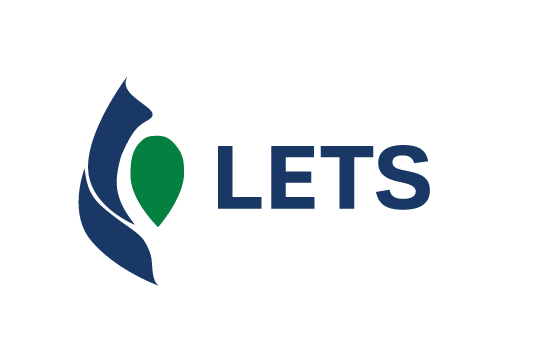An enormous challenge, that of proposing some reflection on realities – in the plural! -, artificial intelligence, past, present and future of humanity in all the senses we want to give to this term. After all, what is "being human"? This, so as not to slip into the great question that accompanies us: "what is the human being"? Details that make all the difference.
Since walking the Earth, humans have been challenged to face different types of realities and adversities. Before, the biggest problems were related to physiological safety, in order to ensure the survival of the species. In current times, it could be said that humanity was at the "base of the pyramid" proposed by psychologist Abraham Maslow (in A Theory of Human Motivation, 1943), in which the needs of the human being could be hierarchized into physiological, security, social, self-esteem and self-realization. The physiological needs, without which one cannot survive, much less live, are related to biological functioning (food, hydration, excretion, sleep and sex). As man organized himself into tribes and communities, these needs became more sophisticated and often even more subjective, but always sought, intended and projected. Or would it be the other way around? Precisely because of this subjectivity, this internal search, humans have arrived at virtual reality, augmented reality, the identification and study of intelligences, in a kind of recognition of this pyramid within each one? The eternal question of who or what comes first?
The fact is that, centuries or millennia later, humans, particularly those of the sapiens species, walk through these different motivations, and their discoveries reflect the ethical duality in which life is immersed:
right/wrong; good/bad; beauty/ugliness; forward/backward; peace/war; tolerance/intolerance and so on.
It was this world, all the time disagreeing, that made the motivations of each and everyone end up building and stacking the steps of the "pyramid" leading the human being to establish ties, share ideas and dreams, to seek self-knowledge and self-realization. In this journey, what is called science has developed and gained greater and greater spaces in the search for understanding life, nature, the other, the being.
The history of this journey is long by our time parameters, and could be told or discussed by a number of paths or trails paved by the most diverse disciplines, either in isolation or together, in what is known as interdisciplinarity. It is therefore necessary, in thinking about them, to choose, each time, only a few of these roads and, of course, the material that constitutes them. It would be something like a first stage in the reflection on the current moment of life in society. In this section, which is not necessarily the first on the road, one can look at the ground and the terrain that unfolds ahead. Certainly, one of the beauties that one has before one's eyes and at hand, is the freedom of choice not only of the segment, but of the material that one wants to have as a pavement of ideas from which to unfold the arguments.
It is worth remembering the first half of the title proposed for this conversation, the phrase attributed to the Greek philosopher Socrates, that the only certainty he had was that he knew nothing. In the face of the vanity, foolishness and intellectual arrogance that many sapiens make a point of demonstrating today, it is always opportune to contrast the humility of the thinker's spirit with the much that is ignored about life and its phenomena. However, this counterpoint between knowing nothing and curiosity is what motivates the journey, the discovery. To this challenge, I added to reflect briefly on realities and Artificial Intelligence, the present and the future.
And to think that it all started with humanity's curiosity to "tell" whatever it was...
This intention to quantify (perhaps to share a food?), analogical, because by analogy, allowed us to organize things and activities, probably reducing some tensions in the groups. It could be said that there was time left to learn more, to discover and build more. There was time left to build knowledge and, with it, the need to systematize ideas and regulate actions. Humans, alone or together, with their different motivations, have gone in search of self-fulfillment. Based on knowledge, different disciplines and careers, professions, emerged.
One day, someone thought about taking advantage of the time that seemed to be "left over". How about telling it faster? What if the machine did the human, physical, strenuous work, subject to the greatest number of errors? The idea of the computer was launched. From then on, without the human group realizing it, and at an increasing speed, the digital world opened its doors, or in the figure used, before, the path became less and less analog, unveiling an absolutely new world and, therefore, challenging and even, sometimes, intimidating. The steps, previously slow, could now be fast, fast. We would reach such self-realization more quickly!
(Is it?)
The speed became so pressing that the future seemed (and seems) getting closer and closer. The present, the present, the moment, the now, seems to become shorter and shorter. If, before, the notion of time was something that we did not understand very well, but allowed us to project a certain future, now this horizon seems to be brought to us by telephoto lenses, which move objects very close to us, at the expense, however, of restricting our field of vision. Losses and gains.
The digital world is like this: unlike the analogue one, the "signals" it sends us belong to a set of information that propagates at high speed, with some specific "stops". Again, duality – slow/fast; soft/abrupt; "ones and zeros"; off/on. Advantages/disadvantages.
In the face of all this, the data that feeds our days and our machines seems to have no end and often scares us. Reality multiplies and we have to deal with the real and virtual worlds. However, the virtual world is also real, since it allows us to experience, to experience emotions, for example, that can interfere in our daily lives and even change our behavior. There is a field of genetics that studies inherited behavioral changes, transmitted between generations. It's called epigenetics – but that's a long subject, which is not the focus of this reflection. It is enough here to inform that external factors can act on the expression of our genes.
How, then, do we choose what we want to know? This question concerns everyone, since each option will lead us to different paths and trajectories. Relationships and relationships, career, work or leisure will be the result of some choice made. Analog or digital? How will we behave in the face of information? The so-called analog signals are explained as softer, slower, more continuous and of greater diversity; however, more prone to errors. Digital signals are faster, more accurate, but they have only two discrete values, that is, they are binary. Therefore, there are advantages and disadvantages in each of the systems.
It is at this point in our path that, I think, the second part of the title of this reflection arises: I don't even know what I don't know! To choose, it is necessary to know that there is an alternative. It is necessary to know that there are different paths or, at least, possibilities for them to exist. When we become aware of other opportunities, we will know or we will not know. It is concluded, therefore, that to know is to have the possibility of choosing. It's getting out of the I don't know what I don't know to know that I know nothing. And only then, make the choice!


